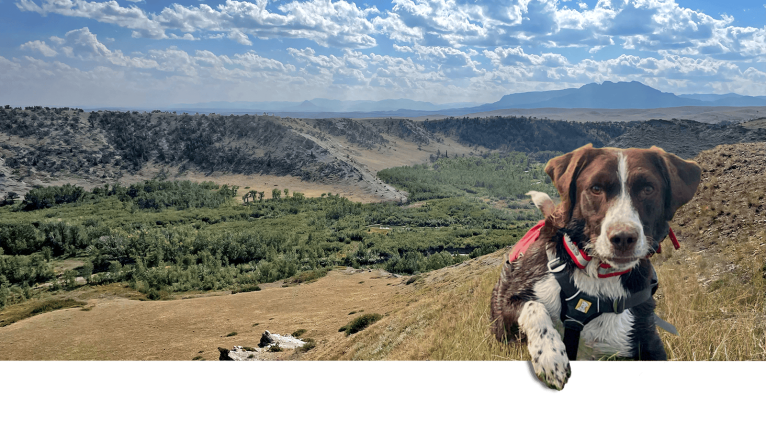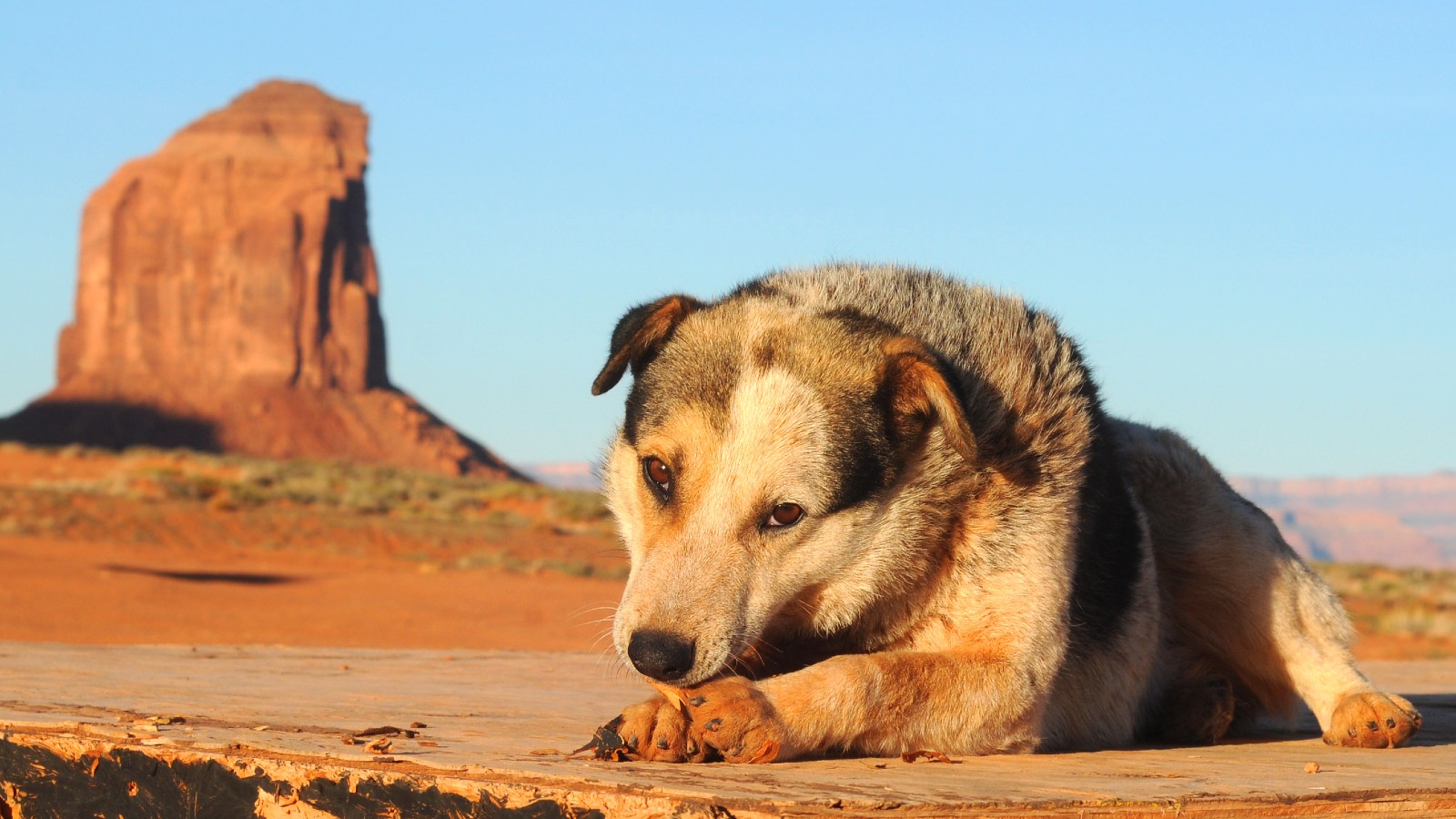Julie Cassadore was stunned when the wildfire ripped through the San Carlos Apache Reservation this July. “The whole downtown was on fire,” she said. “It was just huge, huge, huge clouds of black smoke, and you could hear what sounded like propane tanks exploding. I saw people running with their children.”
That’s when the calls began.
Cassadore is San Carlos Apache and the founder of Geronimo Animal Rescue Team, a nonprofit animal care and adoption organization on the reservation. As the Watch Fire burned around 2,000 acres and destroyed 20 homes, Cassadore’s team began a long night of rescues.
“We were driving around burnt dogs with their burnt paws,” she said. “We were doing that all night.”
But San Carlos doesn’t have an animal shelter of its own, so Cassadore has worked hard the last month to find safe homes for the 20 animals rescued that night.
The Watch Fire began with arson, but high temperatures and drier conditions driven by climate change exacerbated the blaze. As global temperatures rise and events like wildfires become more extreme, the stakes are rising for Indigenous communities and their animals. A lack of animal shelters and foster homes are driving higher euthanasia rates while intense heat puts dogs and cats without homes in serious danger. Between the nationwide shortage of veterinarians, underfunded infrastructure in Indigenous communities, and an increase in the animals in need of care, climate change is impacting the beloved “rez dog” in a myriad of ways.
Much of the problem has roots in the COVID-19 outbreak. In 2020, as the virus spread and lockdowns were put in place, animal spay and neuter clinics across the country were shut down. On the Leech Lake Reservation, for instance, puppy season used to generally begin in the spring. Now, it lasts nearly all year. “Puppy season has been going on on the reservation for over two years now, and in 15 years of doing this I have never seen it like this,” said Jennifer Fitzer of Leech Lake Legacy, an animal rescue organization on the Reservation.
“Pre-pandemic I had easily 20 spots every weekend,” said Fitzer. Now, she says, it’s difficult to find places for even one dog. “It is a very, very, very hard time in animal rescue right now.”
Fitzer adds that with summers getting hotter, she’s seeing more and more animals suffering from dehydration.
Norman Begay is Diné and the animal control program manager on the Navajo Nation. He said that his office gets calls for about 20 dogs a day, and estimates that there are around 180,000 unhoused dogs on the reservation. His office only has 12 officers and no adoption program to keep animals long term. “It’s a liability,” he said. “Some of these dogs are dangerous.” In 2021 a 13-year-old girl on the reservation was killed by a pack of dogs.
Of the animals that are picked up on Navajo Nation, heat is still an issue. “If it’s too hot out, we can’t have dog walkers take them out in the middle of the day,” said Stacie Voss, shelter manager at the Farmington Animal Shelter in New Mexico, a two-hour drive away from Navajo Nation. She said summer is their busy season and that 15 percent of their intake comes from the Navajo Nation.
There are no statistics on how many unhoused animals live in Indigenous communities, but the American Society for Prevention of Cruelty to Animals estimates that 6.5 million dogs and cats entered U.S. shelters in 2023. Only 4.8 million were adopted.
“Shelters across the country are more crowded,” wrote Partners with Native Americans, a nonprofit that provides funding for animal care in tribal communities. “It has become more difficult to relocate dogs to off-reservation shelters for adoption.”
Because euthanasia rates increase exponentially in areas without accessible spay or neuter clinics, tribes have been working to curb animal populations in creative ways. On the Wind River Reservation, the Northern Arapaho Tribe converted a mobile COVID testing vehicle into a mobile spay and neuter clinic to help deal with the unhoused animal population, while the Partnership with Native Americans, a nonprofit that provides financial assistance to Indigenous communities, has committed to investing $100,000 a year for tribal spay and neuter clinics, foster homes, and education efforts to support the Sisseton-Wahpeton Sioux Tribe, Navajo Nation, White Mountain Apache Reservation, and the Rosebud Sioux Tribe. The Humane Society of Western Montana has partnered with the Blackfeet Nation, Chippewa Cree Tribe, and the Confederated Salish Kootenai Tribe to provide spay and neuter clinics, vaccines, and adoption help.
A few years ago, Julie Cassadore, from San Carlos Apache, said nearby shelters wouldn’t take animals from her reservation due to discrimination. “Bottom line, you aren’t helping us because we are Apaches,” she recalls telling a nearby shelter that refused to take dogs from San Carlos.
But that moment inspired her to start the Geronimo Animal Rescue Team, and this year, she won the More Than A Pet Community Hero Award from the Humane Society, with the help of her all-Apache volunteer team. Now, she has support from the San Carlos Tribal Council to build an animal shelter on the reservation — a step that Cassadore said will help more animals as the days get hotter.
“People can come and be able to foster and adopt our dogs, instead of us having to take them off the reservation,” she said. “We hope for that to happen.”
Correction: This story previously misspelled Diné, and incorrectly stated the location of Farmington Animal Shelter.




